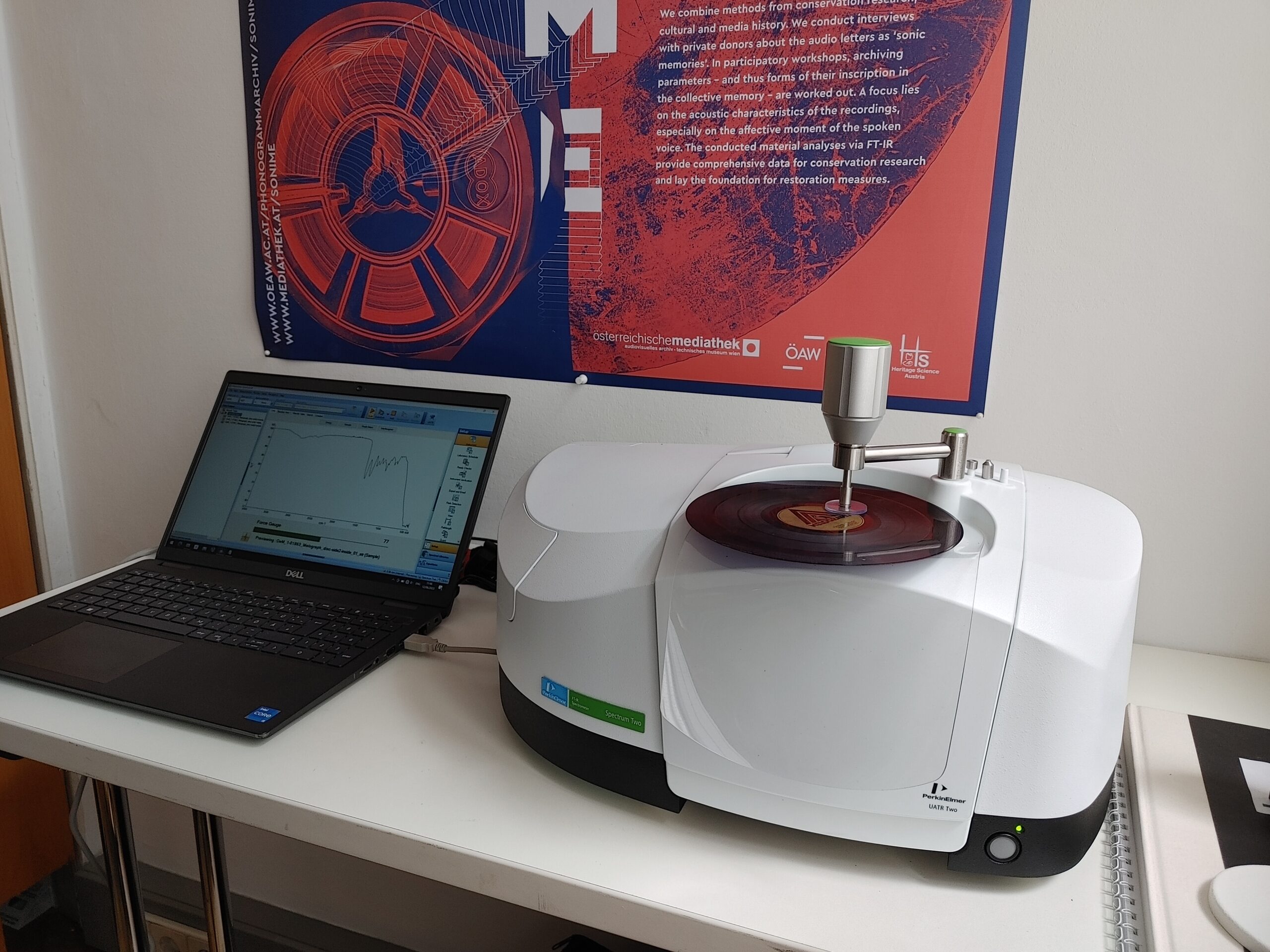
Letters on Discs
Katrin Abromeit, Johann Hinterstoisser (2023): “Audio Letters on Direct Cut Discs. Initial results from the SONIME collection, restoration and research project”
Diskografentag
Saxon State and University Library Dresden (SLUB), Dresden
October 27–28, 2023
At the annual meeting of the Society for (the protection of) Historic Sound Carriers (GHT), Johann Hinterstoisser and Katrin Abromeit presented an overview of the SONIME project and showed their first results from the material analyses.
Starting out with listening to two disc letters, the outline of the project’s general perspective as well as the latest developments, the process of documentation and examination (Fourier-transform infrared analysis, FTIR) of the media in the project was explained.
A short excursus showed the different recording techniques of direct-cut discs (self-recording at home, e.g. with accessories by the manufacturer Draloston / recording in a studio, e.g. in a studio using the Melograph apparatus / using a self-recording booth such as Voice-o-graph).
This was followed by a presentation of the specific material combinations that occur in the direct cut discs investigated to date. Their specific ageing phenomena were shown and explained in terms of material science.
Direct-cut discs can be made from a single material (single layer) or from a substrate with an information layer (multilayer).
The specific characteristics of the single-layer discs made of gelatine, polyvinyl chloride (PVC) and metal were discussed as well as the material combinations of the multi-layer discs being metal / gelatine, metal / cellulose nitrate, glass / cellulose nitrate, cardboard / gelatine, cardboard / wax, cardboard / cellulose nitrate, (soft) polyvinyl chloride / (hard) polyvinyl chloride, polyvinyl chloride / polystyrene and PVC / cellulose nitrate.
The contribution resulted in an article that appeared in the Contributions to the History of the Record Industry Vol.13, see this post.
